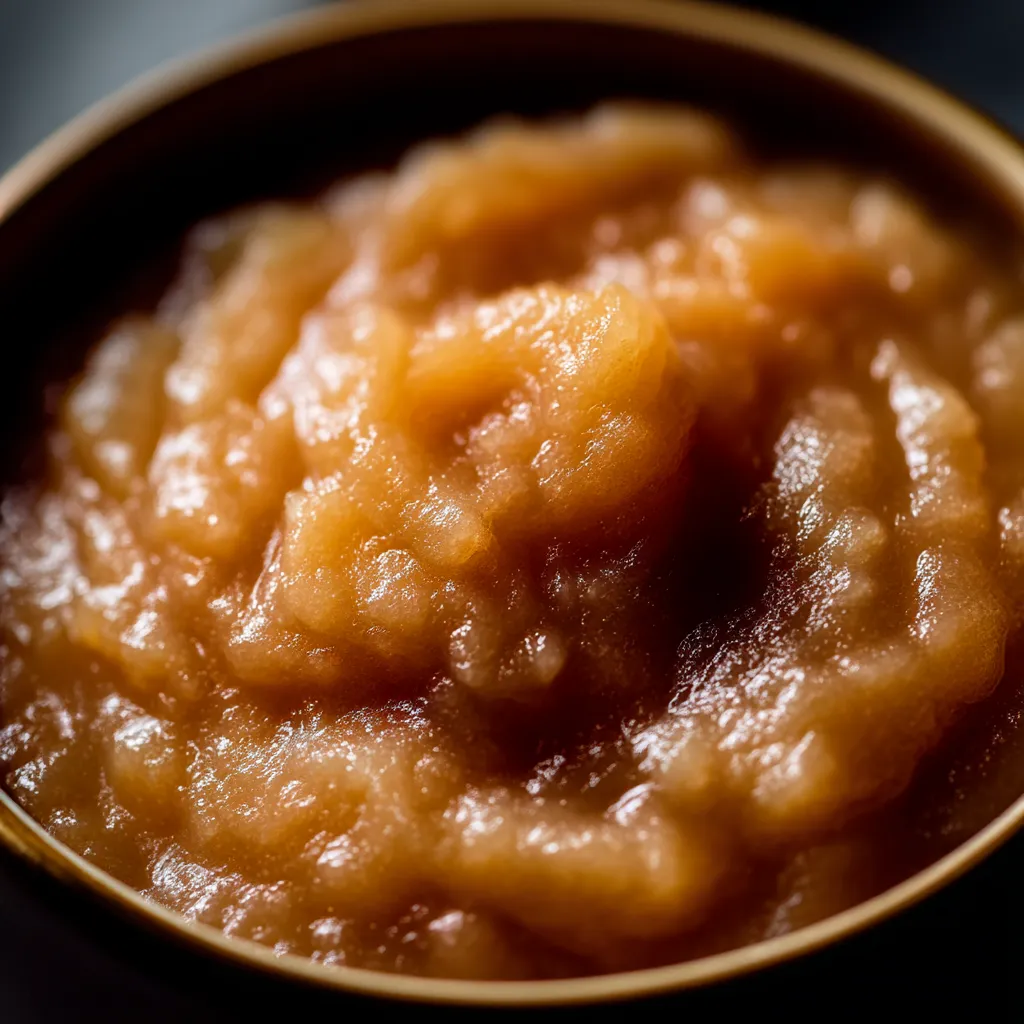 Save
Save
This homemade crockpot applesauce transforms ordinary apples into a silky, aromatic treat with minimal effort. The slow cooking process intensifies the natural sweetness of the apples while cinnamon adds warmth to every spoonful.
I first made this applesauce during apple picking season when we came home with way too many apples. Now my family expects a batch every fall, and the house smells absolutely divine while it cooks.
Ingredients
- Apples: choose a mix of varieties for the best flavor profile, combining sweet apples like Fuji or Gala with tart varieties like Granny Smith for balance
- Water: just enough to prevent sticking and help create steam in the slow cooker
- Cinnamon sticks: they infuse gentle warmth throughout without overpowering, and can be easily removed before serving
- Lemon juice: brightens the flavor and prevents browning, use fresh for best results
- Salt: just a pinch enhances the natural sweetness and depth of flavor in the apples
Step-by-Step Instructions
- Prepare the Apples:
- Peel each apple completely, removing all skin. Core and chop into roughly 1inch chunks they don't need to be perfectly uniform as they'll cook down. The size affects texture so cut smaller for smoother sauce or larger for chunkier results.
- Load the Slow Cooker:
- Add your chopped apples to the crockpot and pour in the water and lemon juice. Sprinkle the salt evenly over the apples and nestle the cinnamon sticks among the fruit. The layering helps ensure even flavor distribution throughout the cooking process.
- Slow Cook to Perfection:
- Cover and set your slow cooker to HIGH for 4 hours. The slow cooking process allows the apples to gradually break down while concentrating their natural sweetness. Stir gently once or twice during cooking to ensure even heating.
- Finish to Desired Texture:
- Remove the cinnamon sticks once cooking is complete. For chunky applesauce simply mash with a potato masher to your desired consistency. For silky smooth applesauce use an immersion blender right in the pot or transfer to a standard blender in batches.
- Cool and Store:
- Allow the applesauce to cool completely at room temperature before transferring to airtight containers. This prevents condensation which can water down your perfect sauce.

The aroma that fills your home while this applesauce simmers is absolutely incredible. My daughter always says she can smell it from the driveway when she comes home from school on applesauce day. There's something deeply comforting about the warm scent of apples and cinnamon wafting through the house.
Choosing the Best Apples
For truly exceptional applesauce, I recommend using at least two or three different apple varieties. This creates complexity and balance in the final product. Sweet varieties like Honeycrisp, Golden Delicious, and Fuji provide natural sweetness, while tart varieties like Granny Smith or Pink Lady add brightness and depth. The best batches I've made combine about 70% sweet apples with 30% tart ones.
Serving Suggestions
This versatile applesauce works beautifully as both a side dish and an ingredient. Serve warm with a sprinkle of cinnamon alongside pork chops or roasted chicken for a comforting dinner. Chill it for a refreshing snack on its own or layered with yogurt and granola for breakfast parfaits. I often use it to replace oil in baking recipes or as a natural sweetener in overnight oats. During the holidays, I serve it warm with a dollop of whipped cream for a light dessert option.
Storage Guide
- Refrigerator Storage:
- Transfer cooled applesauce to airtight glass containers. It will maintain peak freshness for up to 10 days in the refrigerator. The natural acidity from the apples and lemon juice helps preserve it naturally.
- Freezer Storage:
- For longer storage, portion the applesauce into freezersafe containers leaving about half an inch of headspace for expansion. Freeze for up to 3 months. Thaw overnight in the refrigerator before enjoying. The texture remains remarkably consistent even after freezing.
Seasonal Variations
- Fall Harvest: Add a pinch of nutmeg, allspice, and cloves along with the cinnamon for a warmly spiced version that tastes like apple pie filling.
- Winter Comfort: Stir in a tablespoon of vanilla extract after cooking for a creamy, comforting flavor perfect for cold weather.
- Spring Brightness: Add the zest of one orange along with the lemon juice for a citrusy twist that feels fresh and vibrant.
Recipe FAQs
- → What type of apples work best for this slow cooker applesauce?
A mixture of sweet and tart apples creates the best balanced flavor. Good sweet options include Fuji, Gala, or Golden Delicious, while Granny Smith provides excellent tartness. Using a combination provides natural sweetness with enough acidity for depth.
- → Do I need to add sugar to this applesauce?
No, sugar isn't necessary unless your apples are extremely tart. The natural sweetness from the apples develops during the slow cooking process. Taste after cooking and only then add a small amount of sugar or honey if desired.
- → Can I make this applesauce without peeling the apples?
While the recipe calls for peeling, you can leave the peels on if you plan to blend the applesauce at the end. The peels contain nutrients and flavor, but they should be thoroughly washed. The texture will be slightly different but still delicious.
- → How long does homemade applesauce last in the refrigerator?
When properly stored in airtight containers, homemade applesauce lasts 7-10 days in the refrigerator. For longer storage, you can freeze it for up to 3 months. Allow frozen applesauce to thaw overnight in the refrigerator before using.
- → Can I use this applesauce for baking?
Yes! This homemade applesauce works wonderfully in baking recipes. Use it to replace oil or butter (substitute equal amounts) for moisture and natural sweetness in muffins, cakes, and quick breads. It also makes a delicious topping for pancakes or oatmeal.
- → How do I make spiced variations of this applesauce?
While the recipe includes optional cinnamon sticks, you can customize the flavor profile by adding ground spices like nutmeg, cloves, cardamom, or allspice (about ¼ teaspoon each). For a more complex flavor, try adding a vanilla bean or a splash of vanilla extract after cooking.
